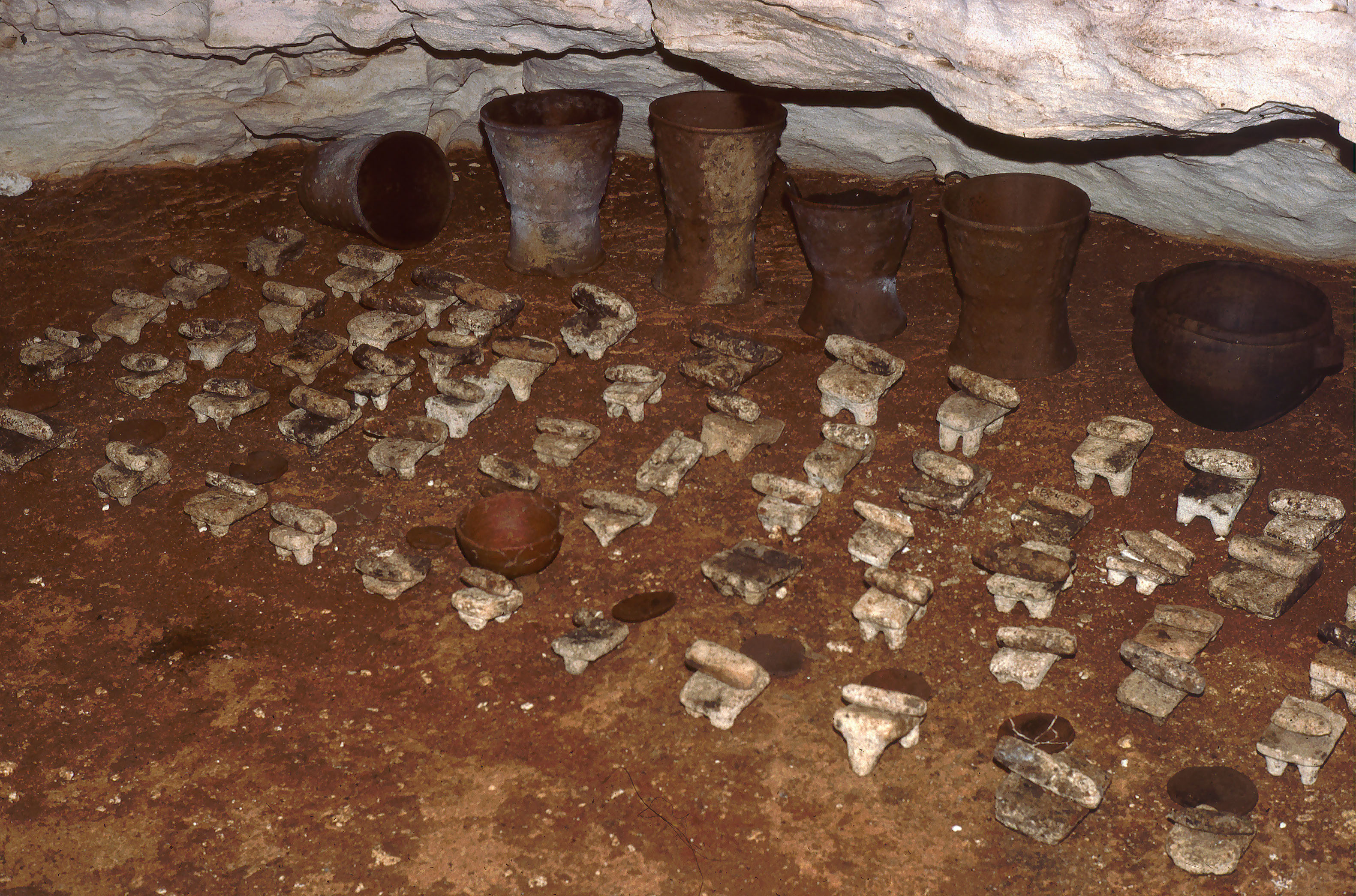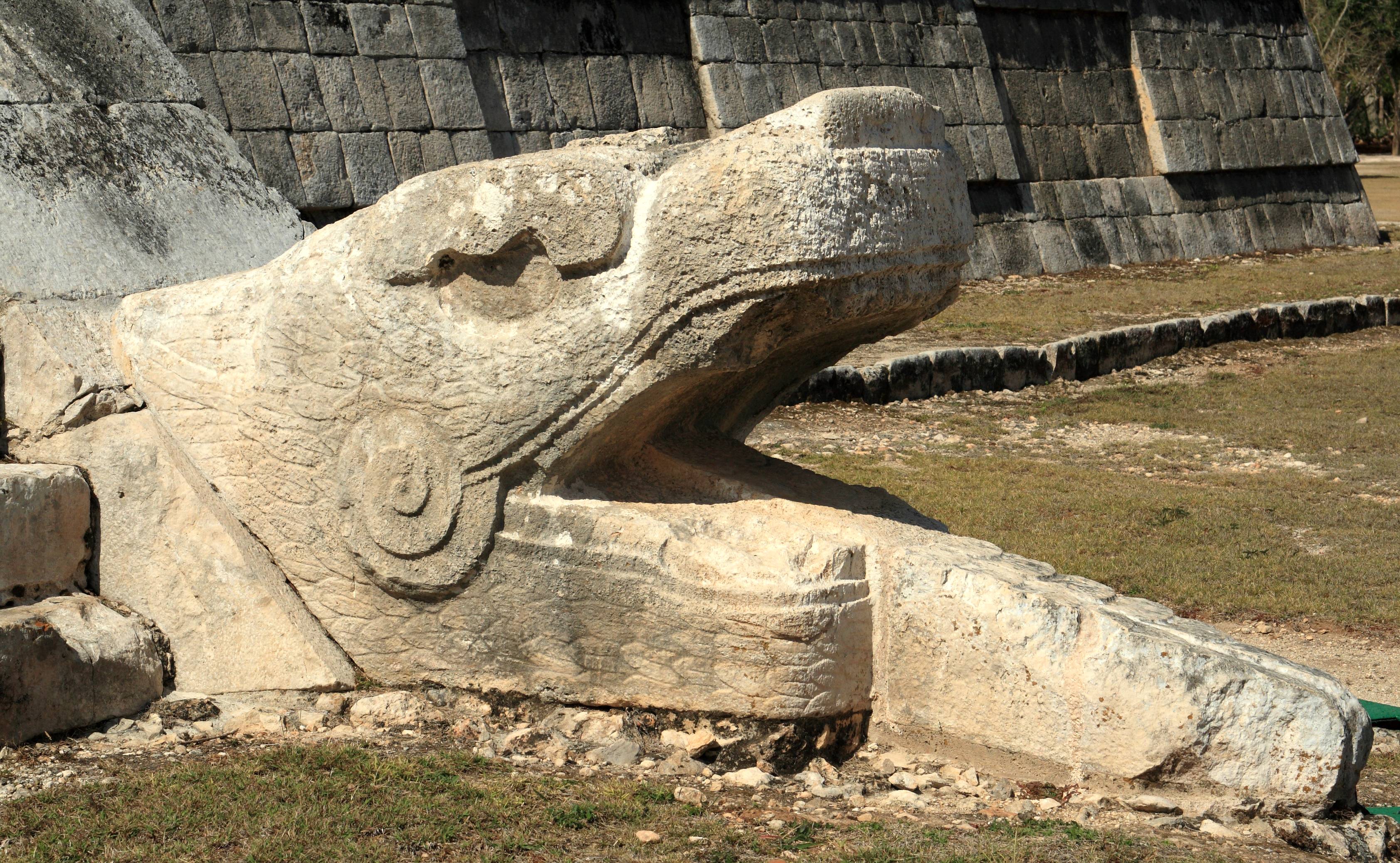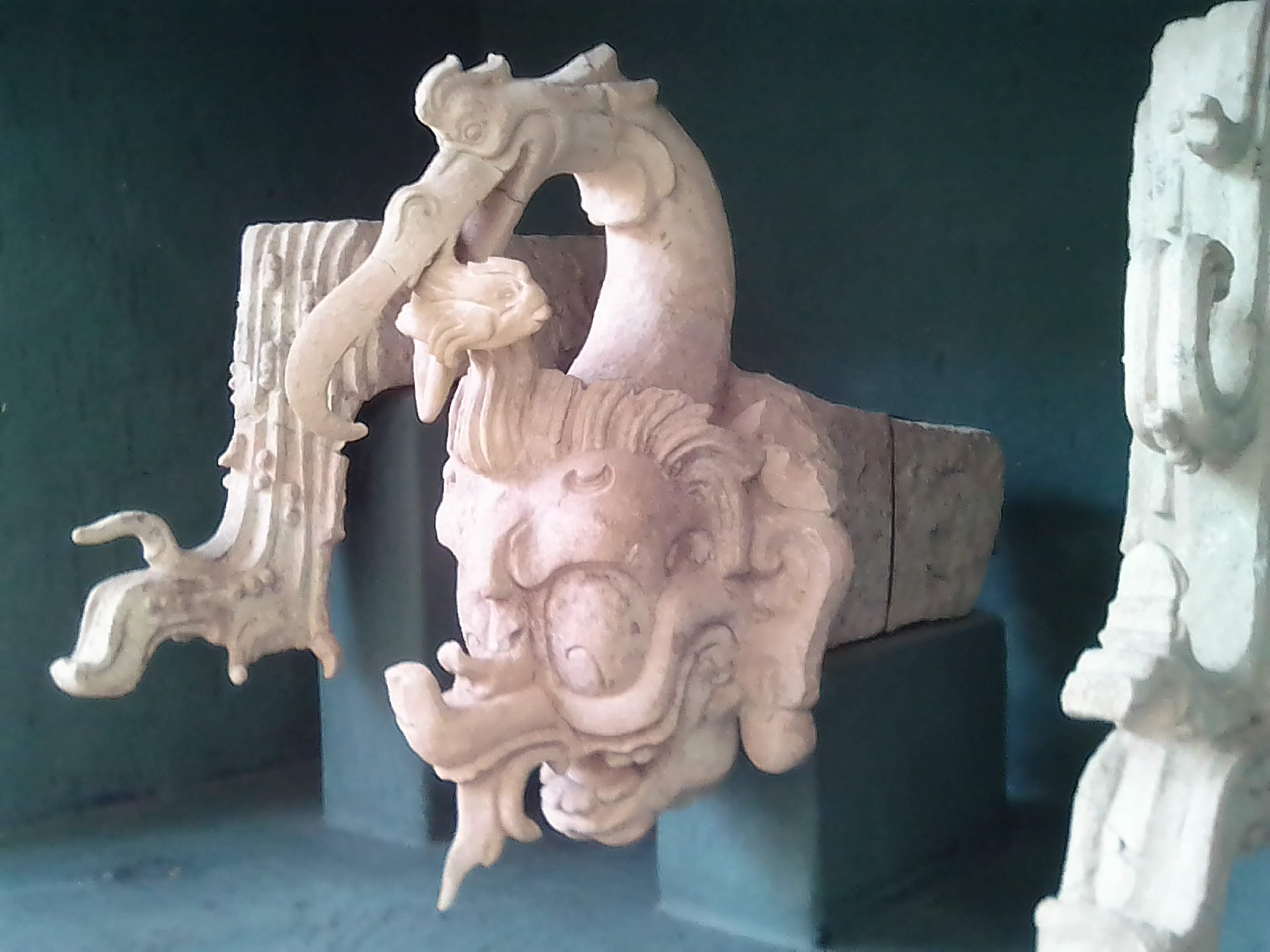|
Balankanche
Balankanche (also Balancanche, Balaamcanche, Balaancanche) is an ancient Maya cave site lying at short distance from the archaeological Maya-Toltec city of Chichen Itza, Yucatan. For more than two thousand years, it has been the focus of rituals dedicated to the Maya rain god, Chaac, and, in the Post-Classic period, also to his Toltec counterpart, Tlaloc. The cave complex was visited by Edward Thompson and Alfred Tozzer in 1905 and has since 1932 been explored and studied by various Mexican and US scholars. Small buildings and platforms surrounded the cave's entrance; inside, stairs, walls, altars and ritual displays of ceramics (especially censers) and small stone implements were discovered. The site has been made accessible for tourists. Notes Bibliography * Bruce Rogers, Grutas de Balancanche. // AMCS Activities Newsletter No. 2 May 2004. pp. 79–83. * E. Wyllys Andrews IV. Balankanche, Throne of the Tiger Priest. Tulane University, 1970. . * {{DEFAULTSORT:Bal ... [...More Info...] [...Related Items...] OR: [Wikipedia] [Google] [Baidu] |
Balankanche2
Balankanche (also Balancanche, Balaamcanche, Balaancanche) is an ancient Maya cave sites, Maya cave site lying at short distance from the archaeological Maya-Toltec city of Chichen Itza, Yucatan. For more than two thousand years, it has been the focus of rituals dedicated to the Maya rain god, Chaac, and, in the Post-Classic period, also to his Toltec counterpart, Tlaloc. The cave complex was visited by Edward Herbert Thompson, Edward Thompson and Alfred Tozzer in 1905 and has since 1932 been explored and studied by various Mexican and US scholars. Small buildings and platforms surrounded the cave's entrance; inside, stairs, walls, altars and ritual displays of ceramics (especially censers) and small stone implements were discovered. The site has been made accessible for tourists. Notes Bibliography * Bruce Rogers, Grutas de Balancanche. // AMCS Activities Newsletter No. 2 May 2004. pp. 79–83. * E. Wyllys Andrews IV. Balankanche, Throne of the Tiger Priest. Tulane ... [...More Info...] [...Related Items...] OR: [Wikipedia] [Google] [Baidu] |
Chichen Itza
Chichen Itza , es, Chichén Itzá , often with the emphasis reversed in English to ; from yua, Chiʼchʼèen Ìitshaʼ () "at the mouth of the well of the Itza people" was a large pre-Columbian city built by the Maya people of the Terminal Classic period. The archeological site is located in Tinúm Municipality, Yucatán State, Mexico. Chichen Itza was a major focal point in the Northern Maya Lowlands from the Late Classic (c. AD 600–900) through the Terminal Classic (c. AD 800–900) and into the early portion of the Postclassic period (c. AD 900–1200). The site exhibits a multitude of architectural styles, reminiscent of styles seen in central Mexico and of the Puuc and Chenes styles of the Northern Maya lowlands. The presence of central Mexican styles was once thought to have been representative of direct migration or even conquest from central Mexico, but most contemporary interpretations view the presence of these non-Maya styles more as the result of cul ... [...More Info...] [...Related Items...] OR: [Wikipedia] [Google] [Baidu] |
Maya Sites
This list of Maya sites is an alphabetical listing of a number of significant archaeological sites associated with the Maya civilization of pre-Columbian Mesoamerica. The peoples and cultures which comprised the Maya civilization spanned more than 2,500 years of Mesoamerican history, in the Maya Region of southern Mesoamerica, which incorporates the present-day nations of Guatemala and Belize, much of Honduras and El Salvador, and the southeastern states of Mexico from the Isthmus of Tehuantepec eastwards, including the entire Yucatán Peninsula. Throughout this region, many hundreds of Maya sites have been documented in at least some form by archaeological surveys and investigations, while the numbers of smaller/uninvestigated (or unknown) sites are so numerous (one study has documented over 4,400 Maya sites)Witschey and Brown (2005) that no complete archaeological list has yet been made. The listing which appears here is necessarily incomplete, however it contains notable s ... [...More Info...] [...Related Items...] OR: [Wikipedia] [Google] [Baidu] |
Maya Cave Sites
Mayan cave sites are associated with the Mayan civilization of pre-Columbian Mesoamerica. Beliefs and observances connected with these cave sites persist among some contemporary Mayan communities. Many of the Mayan caves served religious purposes. For this reason, the artifacts found there, alongside the epigraphic, iconographic, and ethnographic studies, help build the modern-day understanding of the Mayan religion and society. Mayan cave sites have also attracted thieves and invaders. Consequently, some of them have been walled shut to stop any damage to the sites. The immured caves of Dos Pilas and Naj Tunich have been sealed. Study In works compiled for the fight against idolatry, 16th-century Spanish sources mentioned 17 Maya caves and cenotes - nine of which have been found. In his book ''Relación de las cosas de Yucatán'', friar Diego de Landa described the Sacred Cenote. Underground Maya archaeology began in the 1980s and 1990s. The Museo Nacional de Antropología ... [...More Info...] [...Related Items...] OR: [Wikipedia] [Google] [Baidu] |
Chaac
Chaac (also spelled Chac or, in Classic Mayan, Chaahk ) is the name of the Maya god of rain, thunder, and lighting. With his lightning axe, Chaac strikes the clouds, causing them to produce thunder and rain. Chaac corresponds to Tlaloc among the Aztecs. Rain deities and rain makers Like other Maya gods, Chaac is both one and manifold. Four Chaacs are based in the cardinal directions and wear the directional colors. In 16th-century Yucatán, the directional Chaac of the east was called ''Chac Xib Chaac'' 'Red Man Chaac', only the colors being varied for the three other ones. Contemporary Yucatec Maya farmers distinguish many more aspects of the rainfall and the clouds and personify them as different, hierarchically-ordered rain deities. The Chorti Maya have preserved important folklore regarding the process of rain-making, which involved rain deities striking rain-carrying snakes with their axes. The rain deities had their human counterparts. In the traditional Mayan (and ... [...More Info...] [...Related Items...] OR: [Wikipedia] [Google] [Baidu] |
Toltec
The Toltec culture () was a pre-Columbian Mesoamerican culture that ruled a state centered in Tula, Hidalgo, Mexico, during the Epiclassic and the early Post-Classic period of Mesoamerican chronology, reaching prominence from 950 to 1150 CE. The later Aztec culture saw the Toltecs as their intellectual and cultural predecessors and described Toltec culture emanating from ''Tōllān'' (Nahuatl for Tula) as the epitome of civilization; in the Nahuatl language the word ''Tōltēkatl'' (singular) or ''Tōltēkah'' (plural) came to take on the meaning "artisan". The Aztec oral and pictographic tradition also described the history of a Toltec Empire, giving lists of rulers and their exploits. Modern scholars debate whether the Aztec narratives of Toltec history should be given credence as descriptions of actual historical events. While all scholars acknowledge that there is a large mythological part of the narrative, some maintain that, by using a critical comparative method, some ... [...More Info...] [...Related Items...] OR: [Wikipedia] [Google] [Baidu] |
Edward Herbert Thompson
Edward Herbert Thompson (September 28, 1857 – May 11, 1935) was an American-born archaeologist and long-time consul to Yucatán, Mexico. Biography Edward H. Thompson was born in Worcester, Massachusetts. Thompson devoted much of his career to study of the Maya civilization. In 1879, ''Popular Science Monthly'' published "Atlantis Not a Myth", an article by Thompson in which he argued that the indigenous civilizations of North and Central America could be remnants of the lost continent of Atlantis.Edward H. Thompson,, ''Popular Science Monthly'', October 1879 The article attracted the attention of Stephen Salisbury III, a wealthy Worcester resident, Mayanist, and principal benefactor of the American Antiquarian Society. Salisbury, along with fellow AAS members The Rev. Edward Everett Hale and Massachusetts Senator George Frisbie Hoar, persuaded Thompson to move to Yucatán to explore the Maya ruins in exchange for receiving an appointment as American Consul. Thompson arrived i ... [...More Info...] [...Related Items...] OR: [Wikipedia] [Google] [Baidu] |
Alfred Tozzer
Alfred Marston Tozzer (July 4, 1877 – October 5, 1954) was an American anthropologist, archaeologist, linguist, and educator. His principal area of interest was Mesoamerican, especially Maya, studies. He was the husband of Margaret Castle Tozzer and father of figure skating champion Joan Tozzer. Early studies and career Alfred Tozzer was born in Lynn, Massachusetts to Samuel Clarence (1846–1908) and Caroline (née Marston, 1847–1926) Tozzer, and graduated in anthropology from Harvard University in 1900. That summer he entered field as an assistant to Harvard's Roland Dixon to study American Indian languages of California. The following year he collected linguistic and ethnographic data on the Navajos living near Pueblo Bonito in New Mexico. From these experiences he published his first paper, which he presented at the Thirteenth International Congress of Americanists held in New York in 1902. In December 1901, he won appointment as a traveling fellow for the Archaeolo ... [...More Info...] [...Related Items...] OR: [Wikipedia] [Google] [Baidu] |
Caves Of Balakanche 2D Map En
A cave or cavern is a natural void in the ground, specifically a space large enough for a human to enter. Caves often form by the weathering of rock and often extend deep underground. The word ''cave'' can refer to smaller openings such as sea caves, rock shelters, and grottos, that extend a relatively short distance into the rock and they are called ''exogene'' caves. Caves which extend further underground than the opening is wide are called ''endogene'' caves. Speleology is the science of exploration and study of all aspects of caves and the cave environment. Visiting or exploring caves for recreation may be called ''caving'', ''potholing'', or ''spelunking''. Formation types The formation and development of caves is known as '' speleogenesis''; it can occur over the course of millions of years. Caves can range widely in size, and are formed by various geological processes. These may involve a combination of chemical processes, erosion by water, tectonic forces, microorgani ... [...More Info...] [...Related Items...] OR: [Wikipedia] [Google] [Baidu] |






